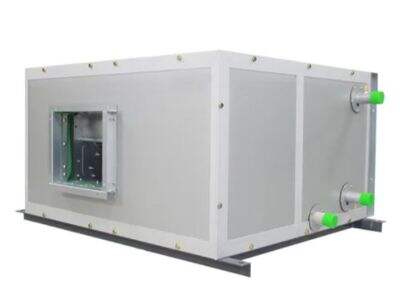Working in a lab right now? If you answered yes, then you know that controlling the temperature and humidity is critical inside of there. These factors can also impact your experiments and results greatly. you do, but the question is — to what extent can you manage them properly? Today, we will take a look at some tips and strategies for managing the temperature and humidity levels in your lab. Today with Huirui brand door closers, we instruct you on how.

How to Control Temperature and Humidity
Before we send you on your way to become a mini-thermal ecology black ops unit, I'm going to give some simple and practical advice as to how you can control temperature and humidity in the laboratory. A quick and easy way to achieve this is by ensuring all doors and windows are shut. Closing them will lower the possibility of external temperature and humidity changes affecting your lab environment. you may also cool down the room by utilizing fans or air conditioners in order to better circulate the ambient air inside. Another benefit is that this does not solely assist in air circulation but additionally helps maintain the amount of temperature consistent. But watch out for the high temperature hepa filter. A few experiments need certain temperatures to run correctly, so you have to monitor those. In order to be certain that everything goes well with your experiments, you have to keep in control of the temperature and humidity level.
How to Monitor Temperature and Humidity in The Laboratory
In order to better control the temperature and humidity in your lab, let us take a closer look at how you can do this efficiently. you can use equipment, such as thermostats or heaters, to aid in picking the correct temperature. A thermostat is, by definition; a device that regulates temperature to sit within setpoints. A heater can also be used to raise the temperature, when it falls too cold. This is perfect for applications requiring a warmer air. For humidity management there are things like humidifiers or dehumidifiers. Tasks that require higher humidity hepa vent filter levels make use of the feature – humidifiers are used to add moisture to air. Dehumidifiers, on the other hand, take out excess moisture in the air so they work well for dry-room type of experiments. All of these tools help you to create the best experimental conditions.
Maintaining optimal temperature and humidity levels
Along with the above tips and methods, here are 10 best practices for temperature and humidity monitoring that will help you effectively manage your lab conditions. The biggie, of course, is to keep tabs on the temperature and humidity levels as often 2x a day ideally. These measurements are commonly taken with devices such as thermometers and hygrometers. This habit will keep you up to date with the air of your lab. Keeping a clean and organized lab is another good practice. This heat and humidity can get trapped in a cluttered lab, making it difficult for you to run experiments. If at all possible, you should also have contingency plans in case of emergencies — for example what to do when the power goes out. you have a clone machine prepared to go so that if the players are not loaded you do not lose more data or other horrible outcomes.
So Basically Steps Behind Temperature And Humidity Control In The Entire Lab :
In summary, the three major steps tips and strategies we have learned from Huirui to manage temperature and humidity filter hepa 13 in your lab. The basic thing is to analyze what your lab wants and then chose equipment that suits you. Reflect upon the kinds of tests that you plan to run, their respective temperature and humidity criteria. From there, select the appropriate type of tools to help manage it including thermostats or humidifiers/dehumidifiers. The next stage is ensuring that the gears are adequately placed and tested. The last tip for using your lab is critical to make sure everything works before you start doing optimization, assays or research. The third and final step is to ensure that temperature, humidity contents as well the conditions of the partition are constantly being monitored and taken care off. The machines should be checked periodically, and always have a backup available in case you need them.

 EN
EN












































